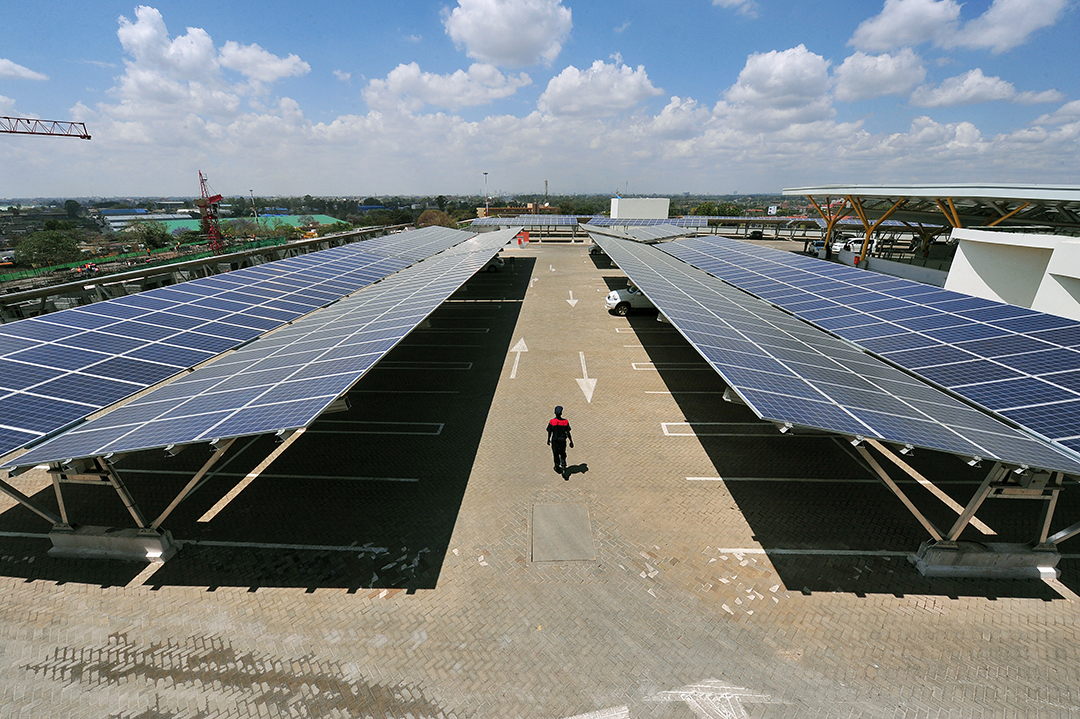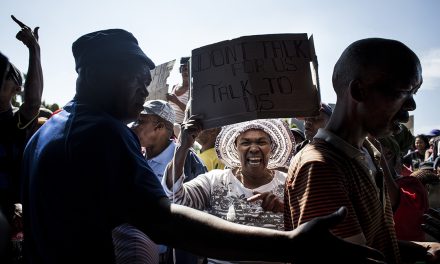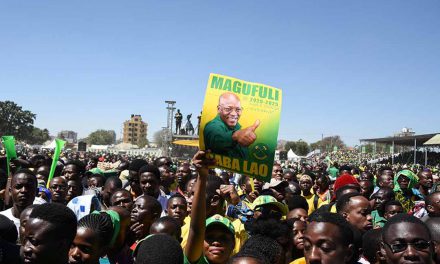Another Energy Action Plan progress update was delivered by South African Electricity Minister, Kgosientsho Ramokgopa, this month (Nov 2023). It has been reported that policy and technical milestones have been achieved, particularly regarding financing to expand generation and transmission capacity enabled by the Renewable Energy Independent Power Producer Procurement Programme (REIPPPP).

A roof-top solar carport. Photo: SIMON MAINA/AFP
The REIPPPP is structured to encourage independent power producers to contribute to the procurement goals through periodic bidding windows to supply electricity and meet the country’s socio-economic development objectives.
Its main purpose is to foster a sustainable renewable energy sector through bidding windows. It became a globally acclaimed public-private partnership to address the electricity supply deficit. It also provides a flexible procurement mechanism to address pressing power infrastructure development needs and reduce carbon emissions through electricity generation.
Another important element of the update was that unit two at Kusile power station is due to re-enter service at the end of November and unit five is scheduled to do the same in December.
But there is still no definite path to end load-shedding—the most important update South Africans look out for in media briefings. At a Financial Times Moral Money Summit in Johannesburg on 21 November, Minister of Public Enterprises Pravin Gordhan said he thought it unlikely that South Africa would return to stage four load-shedding.
Since 1994, South Africa’s energy landscape has changed significantly. A broad electrification drive was delivered at the expense of investing in new generation capacity. This is not what the 1998 White Paper had envisaged, and the key in the current context is to update existing energy policies in a way that transposes the vision and ambitions of the 1998 White Paper to enable cohesion and alignment of plans, programmes and regulations developed over the past 25 years.
Problems and opportunities
Good governance will be integral if independent power producers are to operate effectively, meet their mandate under the REIPPPP, contribute renewable electricity generation to the national grid, and enable community development.
In our respective Good Governance Africa Policy Briefing and Intelligence Report, we examine some of the key policy and technical challenges in the REIPPPP and demonstrate the importance of leveraging public-private partnerships to meet energy needs and socio-economic objectives.
South Africa’s power system has been on the decline for more than two decades, and this has crippled economic growth and industrial development. State-owned electricity utility Eskom has been under severe public and private scrutiny since July last year because this period marked the height of Eskom’s dysfunction and subsequently became the centre of a national governance debate about the rolling blackouts across the country to alleviate pressure on the national transmission grid.
Electricity demand has outstripped generation capacity, operating at 60% to 65% of full capacity. It has, at times, dropped to below 50%. The decline in the electricity availability factor, despite an unresponsive economy, has been particularly concerning.
Multiple factors, including governance, technical and financial mismanagement, explain the power system failures. These highlight the need for private sector players to assist in power generation to feed the national grid.
The government has a critical role to play in the effective implementation and economic viability of localisation and local content policies. This speaks to establishing clear localisation objectives, supported by special economic zones, to stimulate economic development and job creation. This requires creating an enabling policy environment that enhances public-private partnerships and develops programmes in the renewable energy sector.
Enterprise development programmes will be required to promote skills development and financial support to enable people to benefit and participate as procurement providers for independent power producers. The government must coordinate between the private sector, donors and local small and medium enterprises, aiding in the development of partnerships for SMEs meeting the specified criteria for these enterprise development programmes. In doing so, localisation and local content policies can be effectively implemented, promoting local economic development and sustainability.
Re-establish certainty
Beyond this, the importance of regulatory certainty cannot be understated. Regulatory uncertainty is the enemy of investors and entrepreneurs because they can neither plan appropriately nor confidently allocate resources. The lack of effective implementation of policies to address grid infrastructural issues limited the effectiveness of REIPPPP bid windows five and six.
Addressing these problems requires a combination of policy certainty and public-private partnerships for transmission grid modernisation and expansion. The grid needs to be reconfigured to ingest renewable sources, but this was not done in time, which meant that six gigawatts of potential power generation through those bid windows could not be procured. That would have addressed roughly 30% of the deficit and improved energy availability substantially.
Policy and regulatory instability have negatively affected the REIPPPP project development and localisation efforts, as demonstrated by the number of solar photovoltaic manufacturers that closed because of the gap between REIPPPP bid windows 4 and 5 and the unpredictability of demand resulting from it.
Ensuring clear rules for independent power producers, conditions that people must follow, and the strengthening of regulatory bodies such as the National Energy Regulator of South Africa (Nersa) can boost investor confidence. This can lead to more private sector participation and long-term growth in the renewable energy sector.
In doing these, the government can create the necessary preconditions that will align the private sector in the form of independent power producers and financiers of projects to effectively participate in future REIPPPP bid windows, with electrons reaching the national grid, and capitalise on the opportunities presented by the 2023 South African Renewable Energy Masterplan.
A crucial element to ensuring the success of the REIPPPP is reforming the electricity supply industry by moving the country away from Eskom’s monopoly of it as a vertically integrated utility. Progress continues to be made towards unbundling Eskom, with Nersa recently providing the National Transmission Company of South Africa, the unbundled segment of Eskom’s transmission business, with a transmission licence.
To facilitate the effective integration of renewable energy sources, South Africa is concentrating on upgrading its transmission infrastructure. Inadequate transmission capacity has been a significant obstacle to effectively incorporating renewable technologies into the national grid.
The government has sanctioned legislation promoting private generation initiatives and power trading to reduce reliance on Eskom and encourage private sector participation. This strategy is expected to enhance competition and gradually lower electricity costs for end-users. This presents an opportunity for independent power producers to further scale up transmission enhancements and ultimately enable greater grid capacity.
Solutions
In addressing the energy crisis, South Africa has implemented multiple measures to expedite the approval and connection of power projects. Environmental authorisation timelines have been halved, and grid connection clearances are now granted within six months. Eskom also plans to establish solar and battery storage facilities at various locations, including Komati, Lethabo, Majuba and Sere.
However, the limitations of coal power are becoming increasingly apparent. The integration of renewable energy sources, supplemented by flexible gas power and battery storage, is emerging instead as a feasible option. This requires invested private sector players that embody their role as development partners.
With increasing global and national pressures for decarbonisation, the REIPPPP is poised to advance South Africa’s renewable energy goals and support the Just Energy Transition Partnership, which will be a key feature of South Africa’s involvement at the upcoming 28th United Nations Climate Change Conference of the Parties in Dubai.
For South Africa to diversify its generation mix and curtail greenhouse gas emissions, proactive measures to enhance transmission infrastructure and streamline renewable independent power producer approvals will be pivotal.
- This article appeared in Mail & Guardian on 24 November 2023.








